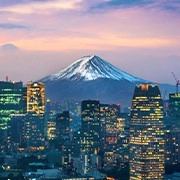Floral Color Magic

We often associate flowers with beauty, fragrance, and natural elegance. However, what truly makes a floral arrangement stand out is how the designer plays with colors and forms.
Flower design is an art that relies heavily on color theory and the visual impact of the shapes created by petals, stems, and leaves.
The way colors are selected, paired, and arranged can evoke different emotions, convey meanings, and transform a simple bouquet into a masterpiece.
In this article, we will explore the powerful role of color and form in floral design, uncovering how designers use these elements to create stunning visual experiences.
The Psychology of Color in Floral Design
When we talk about color in floral design, it's essential to understand that each color has its own psychological effect. For example, red is often associated with passion, love, and energy, while blue can create a sense of calmness and serenity. Green, which is abundant in nature, typically evokes feelings of tranquility and balance. By choosing flowers in specific colors, we can enhance the emotional resonance of a design.
For floral designers, color choices are not just about aesthetics; they are a language of their own. Designers often select colors to communicate a message or set a mood. A wedding bouquet may feature soft pinks and whites to symbolize romance, while a corporate arrangement may use bold reds and blacks to convey professionalism and strength. By understanding the psychology of color, we can ensure that our floral arrangements do more than just look beautiful—they can also influence the atmosphere around them.
Complementary and Contrasting Colors: Creating Visual Harmony
One of the most fundamental principles in floral color design is the use of complementary and contrasting colors. Complementary colors are those that sit opposite each other on the color wheel, such as purple and yellow or red and green. These colors, when used together, create a visually striking effect that immediately captures attention.
On the other hand, contrasting colors can be used to add depth and complexity to a design. Designers often choose a dominant color for a floral arrangement and pair it with contrasting accents to create layers and textures. For example, a predominantly white bouquet with hints of vibrant yellow or orange can create a striking contrast, making the arrangement more dynamic and eye-catching.
Monochromatic Schemes: Elegance in Simplicity
While complementary colors can create bold visual statements, sometimes less is more. A monochromatic color scheme, which uses variations of a single color, can be just as powerful, albeit more subtle. This type of design often relies on the contrast between light and dark shades of the same color to add depth and visual interest.
For instance, a bouquet made entirely of different shades of blue—from pale sky blue to deep navy—can evoke a sense of calm and sophistication. The beauty of monochromatic designs lies in their simplicity and elegance, allowing the natural beauty of each flower to shine without overwhelming the viewer.
The Role of Form and Shape in Floral Design
While color plays a significant role in floral design, the shape and form of the arrangement are equally important. The arrangement of flowers and their physical forms influence how the viewer perceives the piece. For example, a symmetrical design, where flowers are evenly spaced, may convey order and balance, while an asymmetrical design may create a more dynamic and modern look.
Moreover, different flower shapes and sizes contribute to the texture and movement of the arrangement. Tall flowers like lilies or irises create vertical lines, while rounded flowers like peonies or roses add fullness and softness. A skilled floral designer will combine various forms and shapes to create a harmonious balance that captures the eye and pleases the senses.
Combining Color and Form: Creating Visual Impact
Ultimately, the magic of floral design lies in the combination of color and form. When these elements work in tandem, they can create a powerful visual impact. Think of a grand centerpiece for a wedding or event: the colors of the flowers complement the overall theme, while the arrangement's form directs the viewer's attention.
For example, a cascading floral arrangement at a wedding might use rich, vibrant colors like deep purples, reds, and pinks, arranged in a flowing, organic shape that mimics the natural curves of a waterfall. This combination of rich color and graceful form creates not only a visual spectacle but also a sensory experience that evokes joy and celebration.
Conclusion: The Endless Possibilities of Floral Design
In conclusion, color and form are two of the most crucial aspects of floral design. By understanding the psychological impact of colors, playing with complementary and contrasting hues, and balancing different shapes and forms, we can create floral arrangements that speak to the heart and soul. Whether for a wedding, a celebration, or simply as a gift, flowers have the power to convey emotions, set moods, and bring beauty into any space.
As we continue to explore the endless possibilities in floral design, it's exciting to see how these elements evolve, blending tradition with innovation to create even more stunning visual experiences. Flowers are not just a feast for the eyes—they are a language of their own, capable of expressing the deepest emotions in the most beautiful ways.

What are your favorite colors or flowers to work with in floral design? Feel free to share your thoughts with us!

 · Art team
· Art team